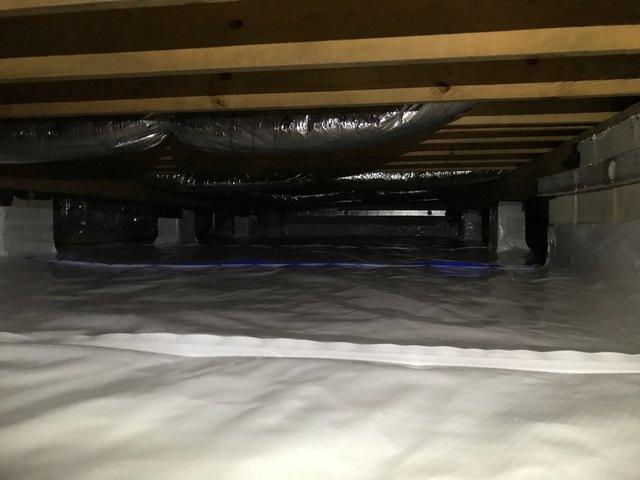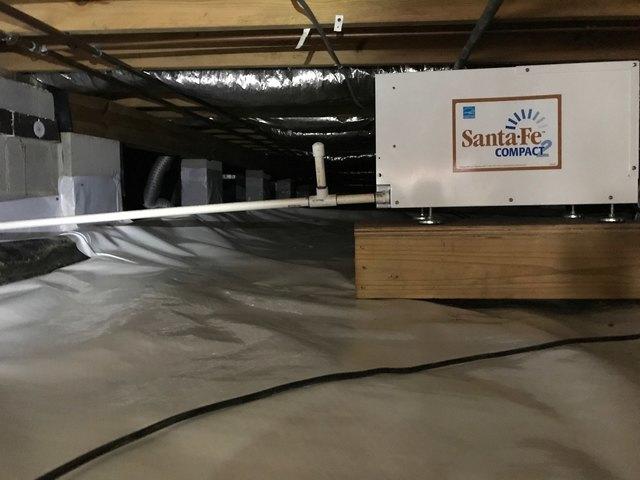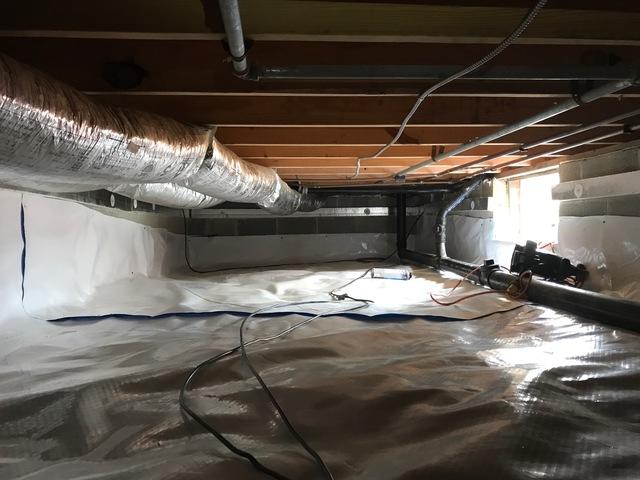
Isolating the crawl space from the earth
Sealing the crawl space off from the earth prevents water vapor from the ground from collecting on the joists or being absorbed by the insulation. It is also a major step toward controlling the relative humidity in the crawl space and deterring microbial growth.

Inefficient duct work in the crawl space
Heating and cooling your home is costly. In vented, dirt crawl spaces your ductwork is essentially outside and being impacted by outdoor temperatures. Heating the air you paid to cool in the summer and cooling the air you paid to heat in the winter making it more difficult and expensive to try and make your home comfortable. Encapsulating your crawl space brings the ductwork into the thermal envelope of your home and make it more efficient to heat and cool your rooms.

Controlling relative humidity with a dehumidifier
A dehumidifier is an important step in controlling relative humidity. While we can seal the crawl space off from the earth and prevent as much outside air as possible from getting in, we still need to control the amount of moisture in the air. The dehumidifier will only cut on when the relative humidity becomes too high in the crawl space, so it won't run when you don't need it.

Sealing the Crawl Space
The CleanSpace Vapor Barrier is a 20-mil heavy-duty liner, similar to a pool liner. It is durable enough to stand up to storing items on it or service persons working in the crawl space. We take the liner up the crawl space walls 6-8 inches above outside grade and seal it to the walls then install closed cell spray foam over it. The crawl space entrance will have an interior friction fit door completing the required R-10 of continuous insulation and sealing an often-overlooked hole allowing air carrying moisture to dump into the crawl space.

